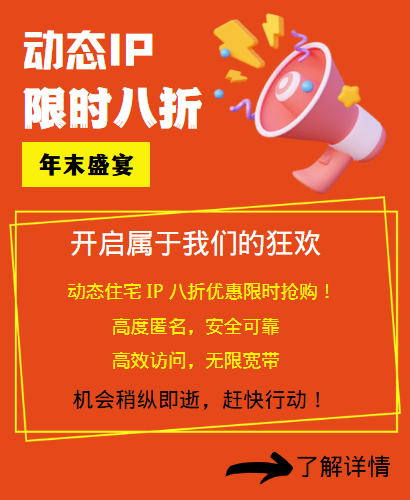Introduction: Challenges and Countermeasures for IP Blocking
In scenarios such as data collection and web crawling, proxy IP is an important tool to bypass geographical restrictions and protect real IP addresses. However, frequent use of the same IP address for a large number of requests often triggers the anti-crawler mechanism of the target website, resulting in IP blocking. To address this challenge, this article will introduce 7 efficient proxy IP rotation strategies in detail, aiming to help users effectively prevent IP blocking, and briefly mention 98IP Proxy as one of the high-quality proxy service providers.

I. Building and managing proxy IP pools
1.1 Building a proxy IP pool
Building a proxy IP pool is the first step to prevent IP blocking. Users need to collect proxy IPs from multiple legal and reliable channels, such as public proxy websites, purchased professional proxy services, etc. During the construction process, it is important to ensure the quality of the proxy IP, including its anonymity, speed, stability, and survival time.
1.2 Maintenance of proxy IP pool
Regular maintenance of proxy IP pool is also critical. This includes removing invalid proxy IPs, updating active proxy IPs, monitoring the performance of proxy IPs, etc. Through maintenance, ensure that the proxy IP pool always remains efficient and available.
II. Formulate a scientific rotation strategy
2.1 Rotation based on request frequency
To avoid being blocked due to excessive request frequency, users should formulate a reasonable request frequency according to business needs and automatically switch to a new proxy IP when the set threshold is reached.
2.2 Rotation based on request interval
In addition to frequency, request interval is also an important factor affecting IP blocking. Users should set a reasonable request interval based on the anti-crawler strategy of the target website to simulate the behavior pattern of human users.
2.3 Rotation based on time period
For some websites that are more sensitive to IP requests during specific time periods, users can increase the rotation frequency of proxy IPs during these time periods to reduce the risk of being blocked.
III. Use multiple proxy types
3.1 Selection of transparent proxy, anonymous proxy and high-anonymous proxy
Different types of proxy IPs have different abilities to protect user privacy. Transparent proxy will expose the user's real IP address, while anonymous proxy and high-anonymous proxy can better hide the user's identity. Users should choose the appropriate proxy type according to their needs to increase the success rate of requests.
3.2 Mixing HTTP and HTTPS proxies
To further increase the diversity of requests, users can try to mix HTTP and HTTPS proxies. This helps reduce the target website's recognition rate of a specific type of proxy IP, thereby reducing the risk of being blocked.
IV. Randomize request parameters
4.1 Randomize User-Agent
User-Agent is a string that the browser uses to identify its type and version. By randomizing User-Agent, users can make requests look more like real users from different devices and browsers, thereby reducing the risk of being blocked.
4.2 Randomize Request Header
In addition to User-Agent, users can also randomize other request header fields, such as Accept, Accept-Encoding, etc., to increase the diversity of requests.
Ⅴ. Using Reverse Proxy and Load Balancing
5.1 The Role of Reverse Proxy
A reverse proxy server can be used as an intermediate layer between the client and the target server to cache responses, optimize request processes, and hide real IP addresses. By configuring a reverse proxy, users can reduce the risk of IP being blocked to a certain extent.
5.2 Implementation of Load Balancing
Load balancing technology can distribute requests to multiple proxy IPs, thereby dispersing request pressure and reducing the probability of a single IP being blocked. Users can choose appropriate load balancing strategies according to their needs, such as polling, weighted polling, etc.
Ⅵ. Monitoring and Early Warning Mechanism
6.1 Real-time Monitoring of IP Status
Users should establish a real-time monitoring mechanism to regularly detect the status of the proxy IP, including whether it is available, response time, whether it is blocked, etc. Through monitoring, users can timely discover and handle abnormal IPs to ensure the success rate of requests.
6.2 Early Warning Mechanism
When the request failure rate of a proxy IP exceeds the set threshold, the system should automatically trigger the early warning mechanism to notify the user to take corresponding measures, such as changing the proxy IP, adjusting the request strategy, etc.
VII. Select a high-quality proxy service provider
7.1 Introduction to 98IP Proxy
98IP Proxy is a professional proxy IP service provider that provides high-quality, stable and reliable proxy IP resources. Its proxy IP pool contains proxy IPs of various types and regions, which can meet the needs of users in different scenarios.
7.2 Reasons for choosing 98IP Proxy
- Rich resources: 98IP Proxy has a huge proxy IP pool that can meet the needs of users with high concurrency and large traffic.
- Stable and reliable: 98IP Proxy's proxy IPs are strictly screened and tested to ensure their stability, speed and anonymity.
- Technical support: 98IP Proxy provides professional technical support and after-sales service, which can solve various problems encountered by users during use.
Conclusion: Build a perfect proxy IP rotation system
By building a proxy IP pool, formulating a scientific rotation strategy, adopting multiple proxy types, randomizing request parameters, using reverse proxy and load balancing, establishing a monitoring and early warning mechanism, and selecting high-quality proxy service providers, users can build a perfect proxy IP rotation system to effectively prevent IP blocking and improve the efficiency and success rate of data collection and web crawlers. When choosing a proxy service provider, 98IP Proxy is undoubtedly a choice worth considering.
Related Recommendations
- New social media strategy for going overseas in 2025: The secret weapon of proxy IP
- Proxy IP effectively solves various pain points in crawler data collection!
- How to prevent overseas social media matrix connections through IP proxies?
- Facebook Group Marketing Artifact: Proxy IP Switch Identity Batch Group Addition Skills
- How does socks5 agents work? What can socks5 agents do?
- How to apply proxy IP in questionnaires? Why do we need http proxy ip for market research?
- What issues should I pay attention to in the application of computer room agent network?
- Socks5 Technology Overview: Analysis of Foreign Applications and Advantages
- Static Residential IP Buying Guide: Precautions and Tips for Avoiding Stacks
- Steam cross-regional unlocking game libraries and low-cost purchase strategies

